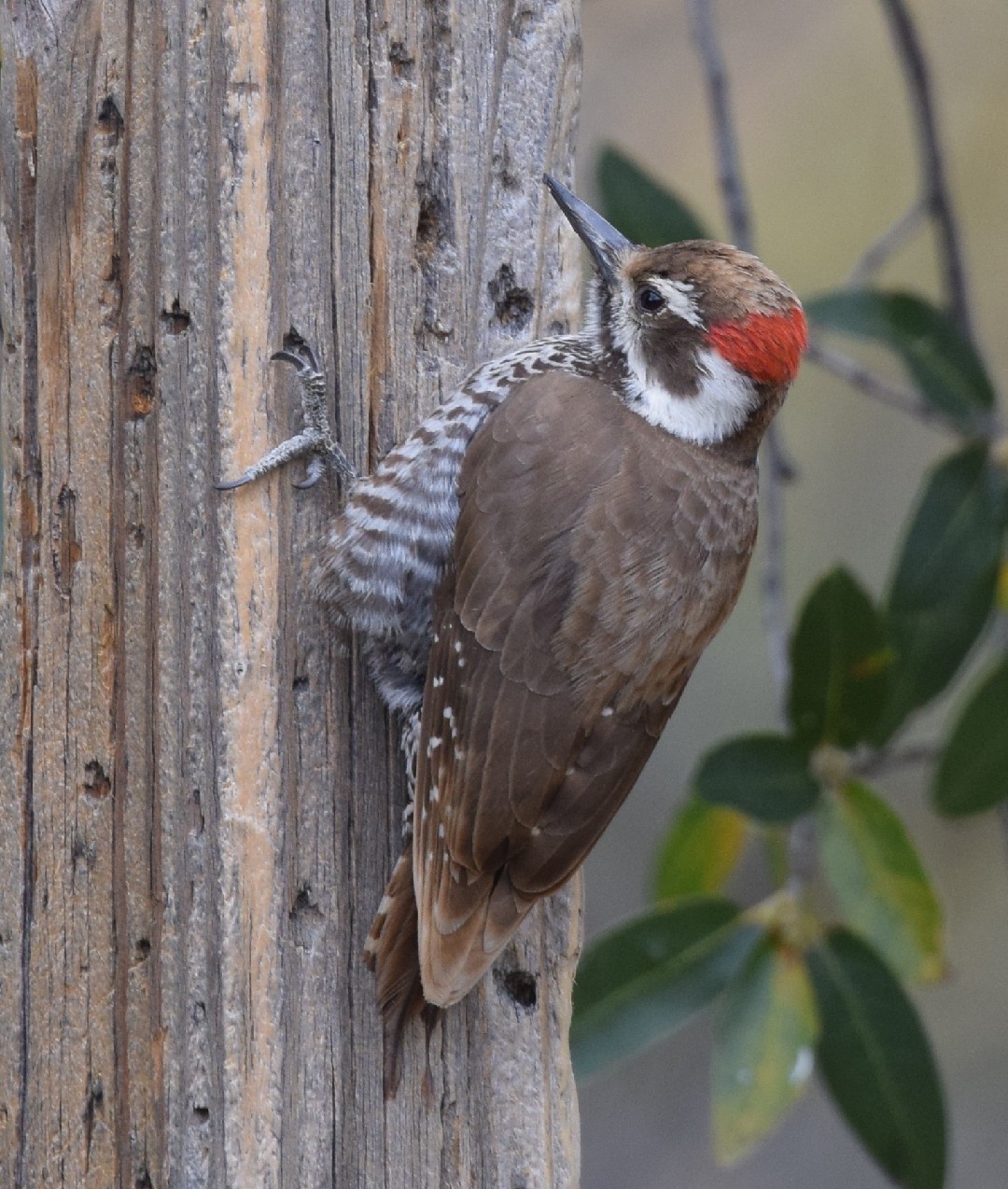Arizona Woodpecker
A species of Three-toed woodpeckers Scientific name : Leuconotopicus arizonae Genus : Three-toed woodpeckers
Arizona Woodpecker, A species of Three-toed woodpeckers
Botanical name: Leuconotopicus arizonae
Genus: Three-toed woodpeckers
Content
Description General Info
 Photo By Andy Reago & Chrissy McClarren , used under CC-BY-2.0 /Cropped and compressed from original
Photo By Andy Reago & Chrissy McClarren , used under CC-BY-2.0 /Cropped and compressed from original Description
Arizona woodpeckers are nearly identical to Strickland's woodpeckers, growing to be about 7 to 8 inches in length. Their plumage is mainly brown and white in coloration, brown on top with a dark rump with white underparts speckled with brown spots. Arizona woodpeckers usually have white bars on their wings, and have two white stripes across their face which join with another white bar on their neck. Male Arizona woodpeckers also have a red patch on the nape of their head which is lacking on females. The call of the Arizona woodpecker is a sharp, squeaky keech, and this species also gives a rattle call of descending, grating notes. 
Size
18 - 20 cm
Nest Placement
Cavity
Feeding Habits
Arizona Woodpecker's diet primarily consists of beetle larvae, berries, and acorns, supplemented by a variety of insects like weevils and long-horned beetles. These birds employ foraging techniques of flaking, prying, and probing into tree bark or hammering into wood. Males often excavate, while females typically flake bark to find food, using a distinctive upward spiral foraging pattern on pines.
Habitat
The arizona Woodpecker primarily inhabits montane pine-oak forests and woodlands within 'Madrean' mountainous regions, at elevations typically ranging from 5,000 to 8,000 feet. These habitats are cool and dry and feature a diverse array of flora, especially oak and pine species. Though generally non-migratory, the arizona Woodpecker may move to lower altitudes with oak-juniper groves and riparian areas during colder seasons.
Nest Behavior
During the breeding season, arizona Woodpecker carve out their nesting cavities, lay eggs, and perform parental duties such as incubating the eggs and feeding hatchlings, with both parents sharing responsibilities.
Nest Characteristics
Arizona Woodpecker's typically select dead wood for their nests, excavating cavities roughly 16 feet high, though ranging from 2 to 49 feet. These unlined cavities average 2 inches in width and 12 inches in depth.
Dite type
Insectivorous
General Info
Feeding Habits
Bird food type
Sounds
Call
Recording location: Mexico
Call
Recording location: United States
Drum
Recording location: United States
Behavior
Throughout the year, arizona Woodpecker exhibit varying behaviors, with spring marked by vocal calls and drumming from males to attract mates and challenge rivals. Their threat displays are distinctive, involving head bobbing, rapid swaying, wing waving, and tail fanning. Post-mating and post-laying periods are quieter times for arizona Woodpecker. Although territorial defense is noted around the nest, it’s uncertain if this extends to larger areas. Nest cavity excavation is a male-driven activity accompanied by tap signals and display flights to the female. Both partners share in incubating eggs and caring for their young, with family units staying intact weeks post-fledging. During off-breeding seasons, arizona Woodpecker disperse individually but commonly integrate into mixed-species woodland flocks.

 Photo By Andy Reago & Chrissy McClarren , used under CC-BY-2.0 /Cropped and compressed from original
Photo By Andy Reago & Chrissy McClarren , used under CC-BY-2.0 /Cropped and compressed from original Scientific Classification
Phylum
Chordates Class
Birds Family
Woodpeckers Genus
Three-toed woodpeckers Species
Arizona Woodpecker